With two distinct growing areas on the Tomales Bay, we produce some of the finest oysters in the region.
Our oysters, Preston Point and Tomasini Point Pacific oysters are named after the area of the Tomales Bay where they are grown. We sell extra small, small, medium, and large-sized Pacific oysters by the dozen or in bags of 50. Occasionally we sell large oysters. Each size suits a different preparation. Extra smalls are perfect eaten raw, smalls are best served raw or for roasting and grilling on the barbeque, and mediums are delicious roasted or barbecued, and can also be eaten raw. Large are usually enjoyed cooked. We also sell Kumamoto oysters which are extra small Pacific oysters, manila clams, and Tomales Bay mussels.
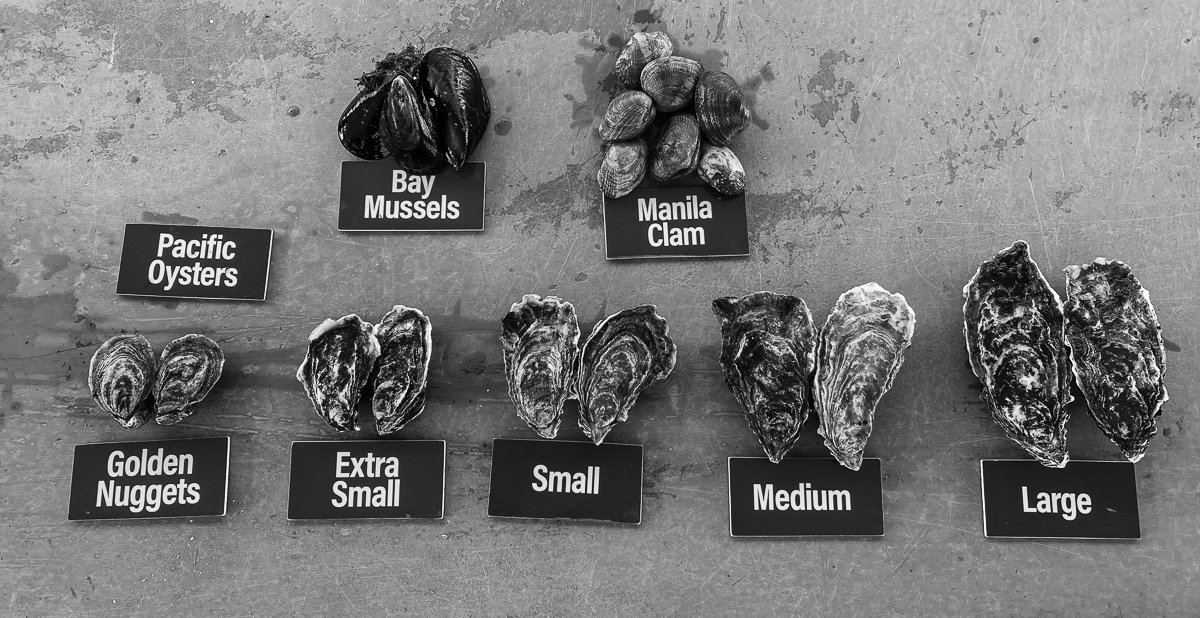
Tomales Bay Golden Nuggets
Our seasonal Golden Nuggets are a cocktail oyster, farmed on the north shore of Millerton Point in TBOC’s cove. The dynamic tumbling system that tumbles the oyster with every tide produces a deep cupped, plump, and ivory-fleshed oyster. The flavor profile starts with the brine of the Tomales Bay estuary, and mellows into a rich, buttery finish, with hints of melon and cucumber. A large scallop (adductor muscle) provides a firm crisp texture. We are proud of our Golden Nuggets not only for their taste and look but also because the nugget growing system is environmentally sensitive and does not disturb bottom-dwelling organisms or eelgrass.
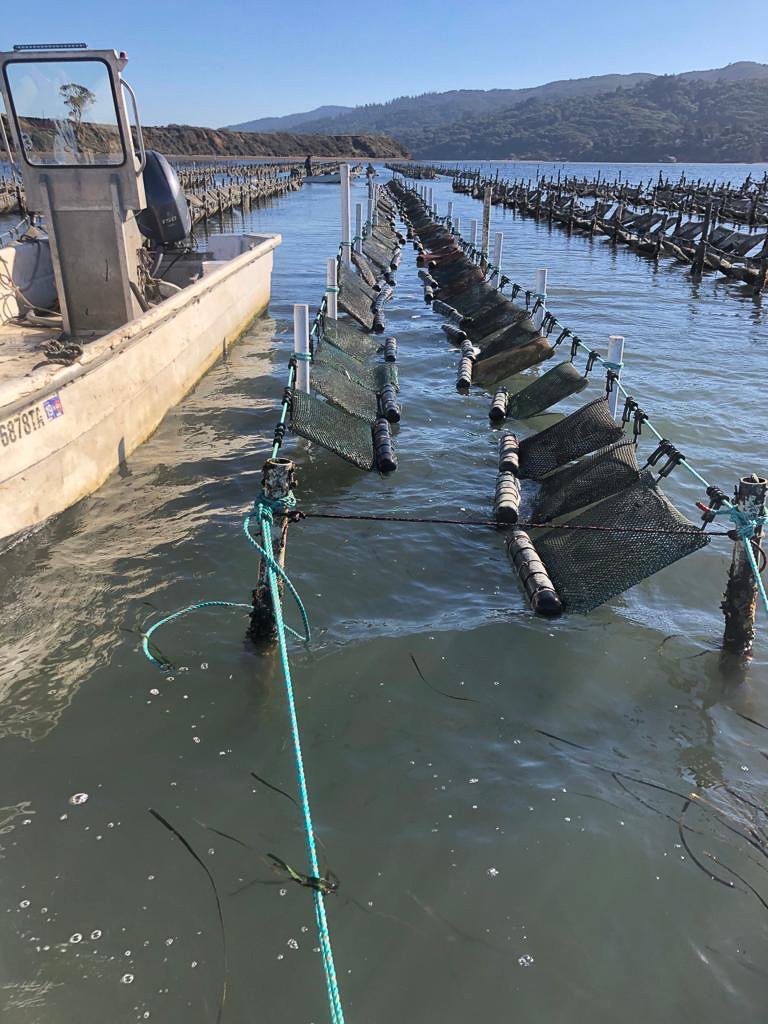
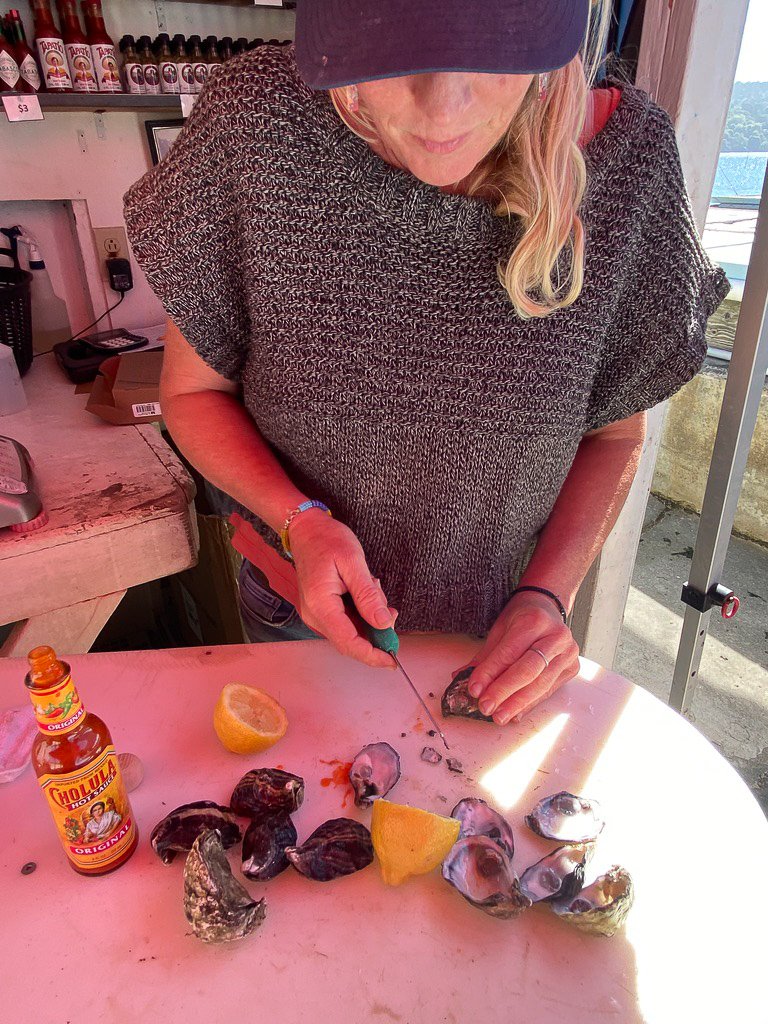
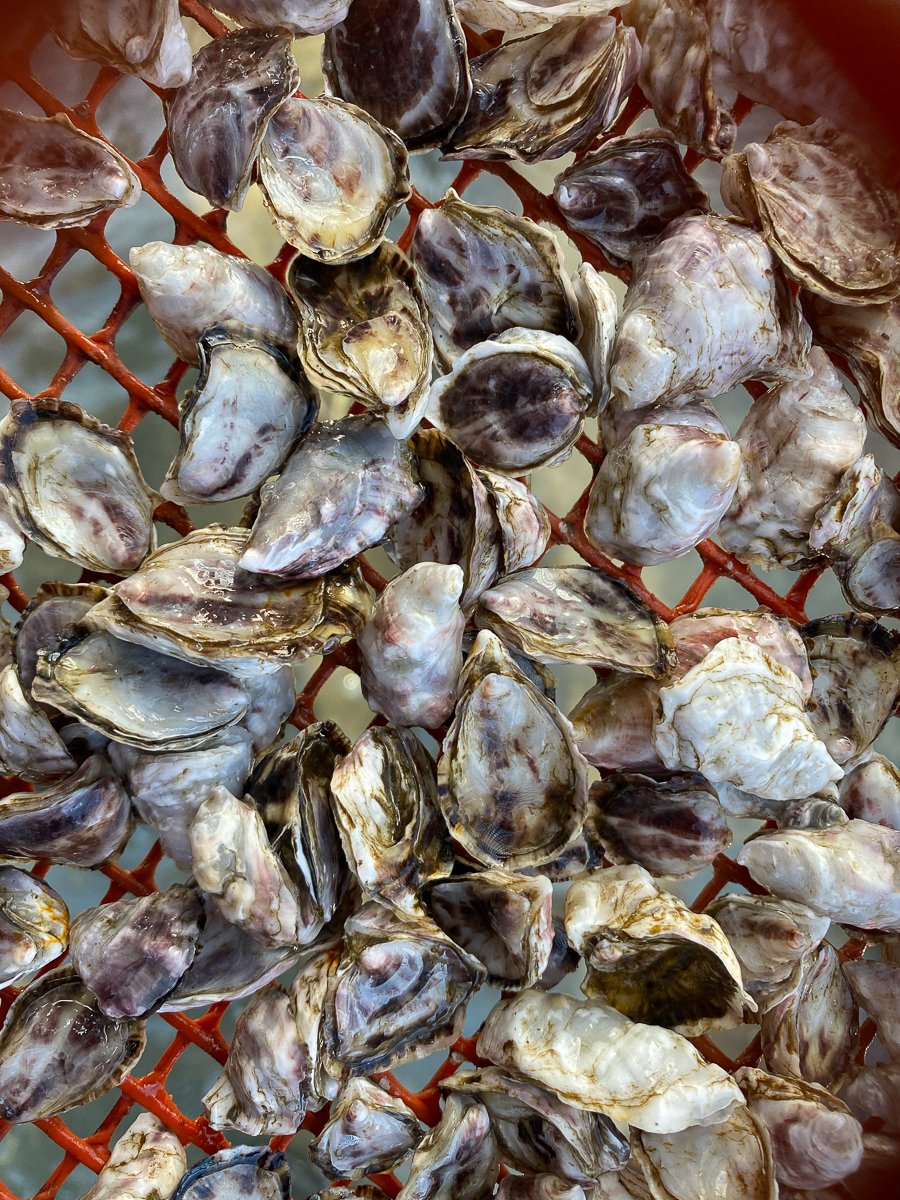


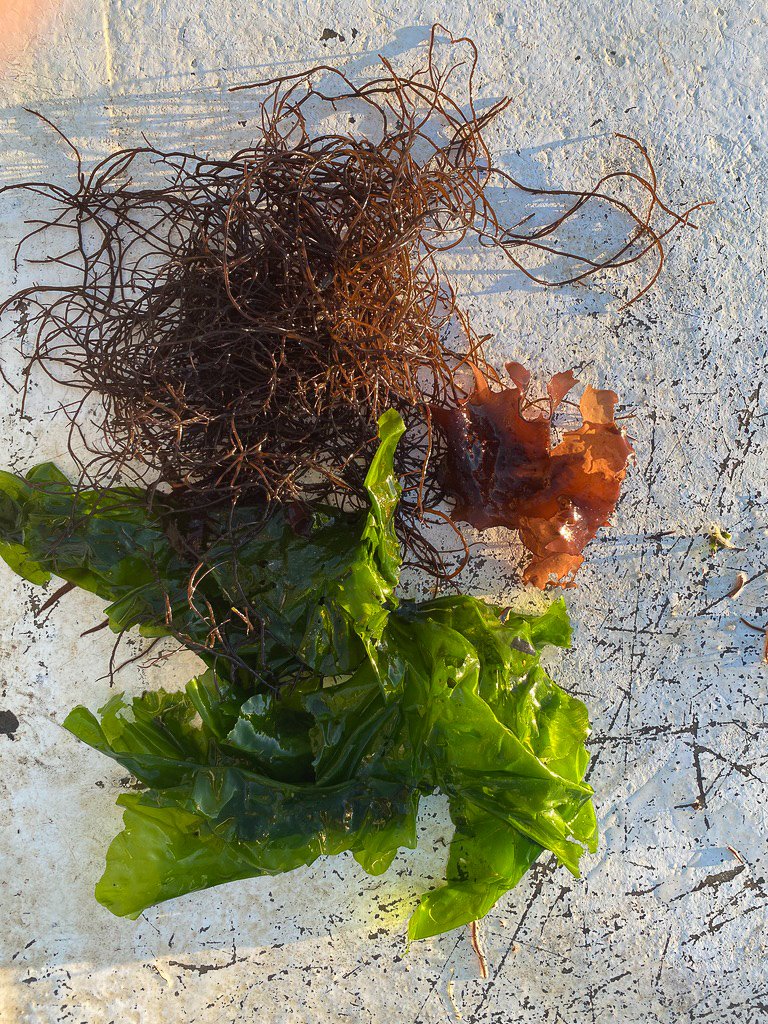
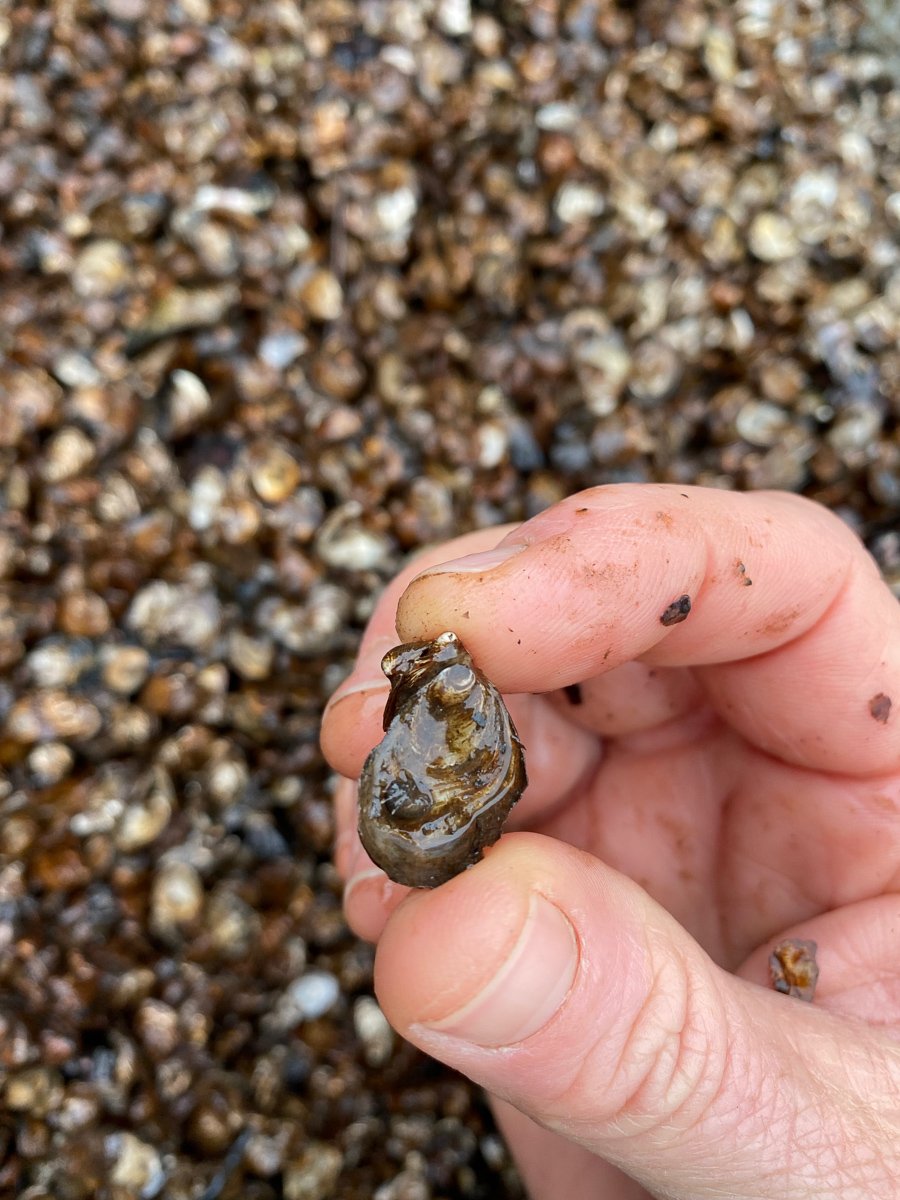

Handling oysters
Like any fresh meat product, oysters require proper care to maintain flavor, texture, and product safety by controlling bacterial growth. After purchase, it is the consumer’s responsibility to properly handle shellfish to maintain these qualities. This information will help you to keep your live shellfish fresh so you can enjoy a safe, nutritious oyster:
Temperature
Keep oysters for several days by placing them in a bowl with a damp cloth to cover and place in a fridge with temperatures ideally 37°- 45° F (1.7°- 7.2° C).
Can I use ice?
Oysters can be kept for 3-4 days on the ice, but it is essential to drain the water from the ice regularly as shellfish submerged in freshwater for long will die. We recommend dumping water morning and night. Do not store shellfish in airtight containers. Keep chilled oysters cup side down to conserve liquid.
Warning signs
Live clams, oysters, and mussels should have tightly closed shells. Shellfish that will not close tightly when tapped should be discarded. If you have any questions please call. We are happy to help.
Sustainable seafood
Pacific Oysters are truly sustainable food. They require no fertilizer, no feed, just a saltwater estuary, and natural phytoplankton, algae, and diatoms brought in by the tide. These natural elements produce a delicious succulent oyster.
Shellfish has a low impact on the environment because it is less dependent on inputs such as freshwater use. Oysters are a more efficiently produced protein compared to land-grown meat.
Oysters, Clams, and Mussels are listed as the best choices of sustainable seafood by The Monterey Bay Aquarium Seafood Watch.
We are a fishchoice.com partner.
Taste merroir
Oyster flavors vary in different seasons. In a drought, oysters will be very salty. In rainy months they will be sweeter. The many different algae growing in the bay impart a nice crisp flavor and green or bluegills. In fall and winter, oysters are firm and chewy, excellent for eating raw, and in summer they have a creamier texture.
They also develop a taste profile from the growing area they are farmed in or their ‘merroir’.
Merroir, with the root word “mer,” which in French means “sea,” refers to the specificity of the environment in which an oyster is grown, and its impact on the oyster itself. This expression is an adaptation of the term “terroir” from the wine lexicon
“Terroir,” with the French root “Terre” for land, refers to the impact of the environment in which a grape is grown on the taste of the wine. This explains why a chardonnay grape grown in the relatively cold, overcast, and mineral environment of Burgundy produces a very different wine than a chardonnay grape grown in sunny, rich-soiled California.
